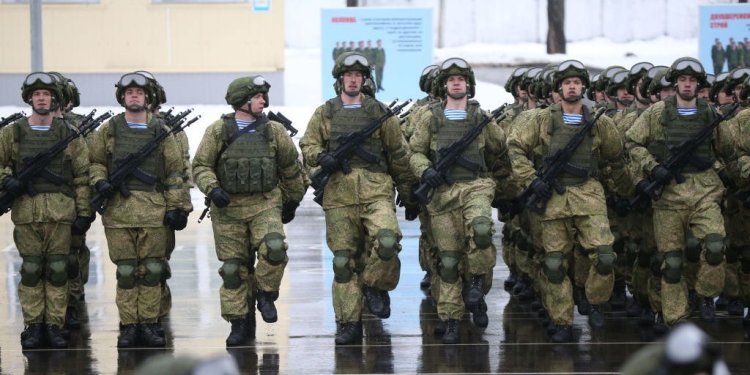Russian assault forces varied wildly in the battle for Avdiivka, from well-trained to 'just confused,' Ukrainian soldiers say
Ukrainian soldiers told The Washington Post that the Russians were inconsistent, which war experts suggest tells us a lot about their tactics.

Mikhail Svetlov/Getty Images
- Ukrainian soldiers report inconsistent training and combat abilities in Russian troops.
- Russia's strategy in Avdiivka apparently included alternating waves of trained and untrained forces.
- Despite the ineffectiveness of poorly trained troops, these waves can strain Ukrainian defenders.
Ukrainian soldiers said that the Russians were inconsistent in their training and combat abilities during their capture of Avdiivka in February, which war experts suggest is telling about their tactics.
Members of Ukraine's military told The Washington Post that a quarter of Russia's troops seemed "just confused" and that the army's equipment lined up with the varying skill levels.
"There were some with little more than uniforms and basic rifles while others had more advanced equipment," the Post wrote, relying on descriptions from Shved, a Ukrainian marksman who said the Russians weren't "really consistent."
Another soldier observed that at one point, the Russians were sending waves of inexperienced, older soldiers with minimal equipment to fight at least three times a day, every day.
Shultz, a soldier in Ukraine's 3rd Assault Brigade, also detailed how the Russians were coming in waves during their takeover. "The Russians were trying to storm our positions, wave after wave after wave," he said.
The White House called attention to this "human wave" tactic in October, when Russia began its renewed offensive, with a National Security Council spokesman saying Russia was again throwing "masses of poorly trained soldiers right into the battlefield without proper equipment."
But there are also experienced forces in the mix.
Experts at the Institute for the Study of War said that Russia's strategy likely consisted of sending out alternating waves of trained and untrained forces to attack Avdiivka.
"Russian forces likely used poorly trained personnel to carry out mass daily attacks on Ukrainian positions and employed trained personnel with better equipment to assault specific positions after exhausting Ukrainian forces," they said.
This strategy implies that Russia may be trying to adapt to ground attacks and "prevent rapid attrition of better-trained units and formations."
ISW experts say it's also possible that Russia used "Storm" units, penal units made up of convicts, in Avdiivka.
Russia has deployed convict units throughout the war, both as part of the Wagner mercenary group and as part of its Storm Z units. Given that these convicts are poorly trained for battle, experts have also noted they are usually ineffective and these units provide "marginal combat power."
Waves can nonetheless strain the defenders. ISW, citing Commander of the 2nd Assault Battalion of the 3rd Brigade Mykola Zynkevych's recent interview with a Ukrainian outlet, noted that Russia would send 20 to 30 people to hit a single position, which is more than they did in the Bakhmut "meat grinder."
What's Your Reaction?



















